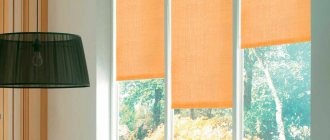Gardeners select exotic plants for a beautiful flower bed. To ensure that unusual flowers delight the eyes for a long time even on cloudy autumn days, they acquire a perennial aster. During this period, she amazes with a riot of colors and becomes a real queen of flower beds. Photos of perennial asters amaze with their diversity and inspire you to create interesting compositions in the garden.
This flower is found in many countries around the world. It got its name because of its shape. The small stars of the inflorescences are compared to celestial bodies and fireworks.
Types of aster
The flower can be found in many gardens and is deservedly popular among gardeners. This amazing plant was cultivated 500 years ago. Aster can have different stem heights and can withstand the first frosts.
There are more than 500 types of these delicate flowers, but only a small amount is used in landscape design. Depending on the variety, the plant pleases us in summer and autumn. Depending on the time of flowering, the following types are distinguished:
- early plant, blooming from May to late June;
- summer varieties that delight us with their beauty from July to August;
- autumn flowers decorating flower beds during the autumn months.
Multi-colored stars will be a magnificent decoration for the front garden of a country house. They will delight owners and guests with their splendor even on rainy autumn days.
Aster varieties
Aster belongs to the genus of herbaceous plants and belongs to the Asteraceae family. About 200 of its species are known to science. This plant is common in Eurasia and North America. In Russia you can find saltmarsh aster (Aster tripolium), naked (Aster laevis), willow (Aster salignus), multi-colored (Aster versicolor), lanceolate (Aster lanceolatus), white-bristled (Aster albosetus), Italian, chamomile, wild, European, steppe (Aster amellus). Asters bloom in September; they are winter-hardy and light-loving. This plant is a melliferous and medicinal plant.
Early perennial alpine aster
The low-growing plant is the most common type. It looks great along paths and is used for planting at the edges of flower beds. Single inflorescences come in different colors.
Varieties popular with gardeners: white “Albus”, pinkish shades “Rosea”, light blue “Gloria”. Aster "Happy End" is ideal for mixed compositions.
Landing Features
For annual aster, as for any other plant, the most important role is played by the soil for planting. Therefore, experts recommend preparing the soil in the fall: digging it up, moistening it, and saturating it with fertilizers. There are two ways to plant an aster: seedlings and non-seedlings.
Seedling method
The seedling method involves sowing seeds in special boxes, and only after the first leaves appear can the plant be planted in open ground. The seedling method provides protection from possible changes in climatic conditions and allows for proper timely care.
Seedless method
Seeds can also be planted in open ground for the winter, but this is risky. As long as the seeds are in the soil, they are not in danger, but sprouted plants may freeze. After the appearance of the second stronger leaf, it is recommended to thin out the distance of 15 centimeters between the bushes.
Summer asters
This amazing Italian flower is a perennial. These flowers look great along a fence. Known varieties: “Lady Hindlip” has a rich pink color, “Veilchenkoenigin” is able to adapt to extreme conditions.
The Bessarabian aster differs from the Italian flower in size. The most common varieties: reddish-purple “Rubellus”, purple “Cassubicus major”.
Autumn flowers
This is the largest group. The New England flower is a tall growing species. It is planted closer to the center of the flower garden or along the fence. Varieties that are popular: lush “Bars Pink”, graceful “Gerberose”.
The New Belgian aster is also in demand. Many flowers appear on it, so leaves are often not visible. Famous varieties: pyramid-shaped plant “Amethyst”, “Ballatd” is distinguished by bright inflorescences.
The bush aster looks great in the garden. Popular varieties of this species: semi-double inflorescences “Alba Flor Plena”, lilac-blue “Blue Bird”, dwarf type “Venus”.
Classification of annual asters
Before we begin to describe the varieties of annual asters, let's talk about their classification. Knowing it, it will be easier for you to navigate such a variety of varieties and types.
Today, there are about 40 groups of annual or garden asters (Callistephus chinensis) in cultivation, which include about four thousand varieties that differ from each other in bush size, color, inflorescence shape and flowering time.
Classification of asters by bush height:
- dwarf (up to 25 cm) Pinocchio, Curb, Olympics, Montpassier;
- short (up to 35 cm) Milady, Scarlet, Liliput, Triumph;
- medium-sized (up to 60 cm); Victoria, Needle, Comet, Laplata, Pompom, Princess, Snow White, Daria, Eurasia
- tall ( up to 80 cm); Peony, Princess, Rose-shaped, Artistic, Blue frost
- giant (above 80 cm);
Classification of asters according to the structure of inflorescences:
- Tubular
- Transitional
- Reed. Moreover, reeds are divided into: non-terry simple, coronal, semi-double, curly, spherical, needle-shaped, imbricated, hemispherical
Classification of asters according to the purpose of cultivation:
- cut flowers (tall with large flowers on long peduncles);
- casing (compact and low, suitable for both flower beds and flowerpots);
- universal (compact, medium-sized with large inflorescences).
Illustration by Jane_Hulinska
Preparing the plant for planting
You should choose the right place to grow flowers. To get a gorgeous bush, it is better to choose a sunny area. Obtaining lush flowers is possible with good lighting.
If you plan to grow several varieties, then planting aster is carried out in accordance with the height of the plants. It is necessary to select varieties so that they do not shade each other and look harmonious in the area allocated for them. Low-growing compact varieties are chosen to frame paths in the garden.
This flower loves loose soil; during its growth, fertilizers must be applied. They will ensure lush flowering. The soil must be perfectly permeable to moisture. If there is stagnation of water, the growth of the aster will slow down. Gardeners dig up the soil and apply fertilizer to prepare a place for the plant.
Planting in open ground
When choosing the second growing method, the seeds are immersed directly in the ground in May. Moreover, aster seeds and seedlings easily tolerate nighttime temperature drops down to -4 °C.
Selecting a location
Asters love sunny areas of gardens and grow well in light partial shade. They prefer light, fertile soils (neutral or slightly alkaline).
Flower beds are prepared in the fall. To do this, dig up the selected area to the depth of a bayonet shovel with the addition of your choice of humus or compost (up to 4 kg per m²). If the soil is depleted, then per 1 sq. m during spring digging, you can add superphosphate - up to 40 g, ammonium sulfate and potassium salt - 20-30 g each.
Remember
Do not add fresh manure to the soil. This can cause fusarium and the flowers will begin to fade.
Predecessors
Astra Ribbon Red
Experienced gardeners know that in order to obtain a good harvest and lush flowering, plant crops must be periodically replanted to other places. In addition, it is worth carefully choosing sites for those plants that do not tolerate certain predecessors. It is not advisable to plant asters in a place where tomatoes and potatoes have already produced fruit. A flowerbed of asters will not grow well after tulips, carnations, and gladioli.
Remember
The planting sites for asters need to be changed periodically. The constant presence of these flowers in the same area can lead to diseases.
Before planting asters, small grooves are formed with seeds. Why do they put seeds in them, sprinkling them with a one-centimeter thick layer of earth? Water the seedlings with plain water or diluted with potassium permanganate until slightly pink.
After planting, to avoid rapid drying out of the soil, asters should be mulched using peat or a special film. Use shelter until the first shoots hatch.
Young asters are thinned out when the first two true leaves appear. Leave a distance of 15-20 centimeters between flowers. Some varieties require more space. It depends on the height of the flower.
Planting perennial aster
It is better to plant the plant in spring; purchase seeds or seedlings at specialized retail outlets. The flower is also propagated by cuttings and dividing the bush. Alpine aster is planted with seeds; this method is not suitable for other types.
Seeds are sown in autumn, but it is better to choose spring for this, when the sun's rays warm the soil. In autumn, the plants are transplanted to a selected area in the garden. They need to be looked after: loosened and fertilized in a timely manner. They need good watering.
Landing
Before planting an alpine aster, it is important to carefully and wisely select a location. The following tips can help with this:
- Although the aster prefers light-loving places, open sunlight can harm the plant. That is why it is better to stay in partial shade.
- The landing site must be protected from the wind.
- The shrub should not be in soil with constant moisture, as this can lead to rotting of the root system.
- It is necessary to drain the soil by adding sand to the hole.
Growing from cuttings
Plants are prepared for propagation in the spring with the onset of the warm season, when the first shoots appear. Cuttings are the most common way to grow asters. To do this, the tops of the plants are cut off.
The lower cut is made obliquely. Before planting, the cuttings are kept in water or a growth stimulator is used for this purpose. The plants are then placed in partial shade and take root in just 1 month. The flowers are replanted next spring.
Dividing the bush
If a flower grows for 5 years in one area, then it should be replanted. In this case, you can divide the bush into parts. This procedure is performed in autumn or spring.
The time for this is selected taking into account the variety of aster. For early flowers, the best time to transplant will be autumn, and for late flowers, spring. The bush is dug out of the ground, the young roots are separated, and the old part is removed.
Annual astra Zemfira
A universal aster variety with a mid-late flowering period.
Bush 60 cm high. Delicate pink inflorescences, double, loose, 10 cm in diameter.
The Zemfira variety is resistant to fusarium.
Annual astra Zemfira
Astra annual Khavskaya lilac-pink
Aster variety with mid-early flowering period.
Variety - Artistic.
The plant is compact, 50-55 cm high. Pink-lilac inflorescences are densely double, medium density, 10-12 cm in diameter.
The Khavskaya variety is resistant to fusarium and relatively resistant to septoria.
Astra annual Khavskaya lilac-pink
Plant care
An unpretentious flower also needs attention. Constant watering should be carried out; during dry periods, the amount of water is increased. It is necessary to remove weeds growing near the aster and loosen the soil well.
Many gardeners use mulch to help retain moisture and slow weed growth. You should definitely feed the flowers with fertilizers. Some types of flowers require additional care.
Shrub plants are pruned to form a beautiful crown. For tall asters, use supports and plant them along the hedge. Aster is not afraid of cold weather, but before winter you need to cut off the stems and cover the ground around it with fallen leaves.
The plant suffers from powdery mildew and gray rot, which are caused by unfavorable weather conditions or poor care. To protect the flower from diseases, it is treated with a special compound.
Aftercare
Regardless of the chosen variety, Alpine aster does not require special care. To obtain lush, abundant flowering, it is important to comply with several requirements:
Watering
Aster is considered a moisture-loving plant. However, you should remember: to avoid moisture accumulation at the roots, the soil must have time to dry out between waterings. During heavy rains, watering should be stopped until the soil is completely dry.
Top dressing
It should be carried out in early spring. This will help the plant wake up and replenish the nutrients lost during the winter. One of the feeding options is a fertilizer from a mixture of 6 grams of nitrogen, 4 grams of phosphorus and 4 grams of potassium, calculated per 1 square meter.











